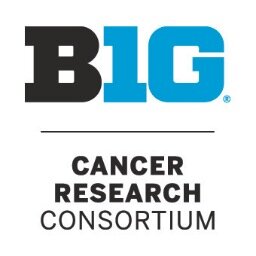Kent McDill, May 3, 2014
 Click here to read BTN LiveBIG's introduction of the Big Ten Cancer Research Consortium.
Click here to read BTN LiveBIG's introduction of the Big Ten Cancer Research Consortium.
The cancer centers at 12 of the schools in the Big Ten have joined forces to create the Big Ten Cancer Research Consortium (CRC), a collaboration on the study of cancer with an aim toward eventually finding a cure.
BTN LiveBig interviewed three cancer center directors working with the CRC to discuss the benefits of a collaborative approach to medical research. We sat down with Dr. Robert DiPaola, Rutgers Cancer Institute of New Jersey; Dr. Patrick Loehrer, Indiana University Melvin and Bren Simon Cancer Center; and Dr. George Weiner, University of Iowa Holden Comprehensive Cancer Center. They discussed the CRC and how a multi-university system under the Big Ten umbrella actually works.
Q: What do you consider to be the one most effective benefit of the CRC?
DiPaola: It is the opportunity to launch multi-center clinical trials that are a benefit to the partners in each of the states in which the Big Ten institutes reside.
Weiner: From my point of view, it is going to enhance our ability to do clinical research more rapidly and come up with answers more quickly.
Loehrer: One of the obstacles that we have in terms of working together within the industry is that the industry wants to be able to do one-stop shopping. If they have a drug they want to develop, they want to get it done as quickly as possible. The ability to go to 12 of the Big Ten institutions, with a patient population that runs into the tens of thousands, can get that done much more quickly, and gets the answer from a clinical trial on a very timely basis.
Q: The logistics of combining the efforts of a dozen different cancer centers would seem to be daunting. How does the CRC make it all work?
DiPaola: It is a more efficient process under one administrative umbrella. Many of the cancer centers have been doing multi-center trials for years, but this is now a much more cohesive and efficient way to organize that activity.
Q: There are differences between the cancer centers in terms of the work they do. How does the consortium take advantage of those differences?
Weiner: Nowadays, very few great advances are made by a single research institution by themselves screaming ?Eureka.? What happens today is much more often a result of teamwork. Operating under the umbrella of the Big Ten parallels the atmosphere of teamwork that exists in the athletic teams of the Big Ten.
Loehrer: The cure for testicular cancer came out of Indiana. Nebraska does a lot of work with lymphomas. Every institution has its own strength, and this affords us to leverage that throughout the system.
Q: The Big Ten started as a structure for competitive athletics. Hospitals are known to compete with each other for funding. How does the consortium fit into an atmosphere where each center wants to be the one that discovers the cure for cancer?
DiPaola: What we are competing against is cancer. I actually like the competitive approach as we all try to defeat cancer. At sports games in the Big Ten, that should be advertised. We are all working together to defeat cancer.
Weiner: I think there is a form of competition but it has a different flavor because it is a competition to contribute, not to win. We are always wanting to be the one that makes that great new advance, but in fact we recognize there are no winners or losers here. We are all after the same thing.
Loehrer: Our competition is the same; it is cancer. And we all have the same mission, to make an impact on cancer. So all of us have the common enemy. That part makes it easier. Historically, there has been a sense of some competition, but recent guidelines in funding have created an atmosphere to solve the problems in a lean and mean way. Given those guidelines, there is an increased opportunity to figure out how to work together.
Q: The Big Ten is one of the most recognizable names in college conferences, and the Big Ten schools wear the name of the conference proudly. Is there a similar spirit that exists when cancer centers take the Big Ten name?
Weiner: The fact is I know how the Big Ten schools function. Most of them are in the Midwest, and the cancer center directors have known each other for years. We are all friends and collaborators. This just puts a collective name and a system to what we have been doing on an individual trial basis for years.
Q: The CRC administrative offices are in Indianapolis. What are the benefits of having a centralized system and how can that be applied to the research?
DiPaola: It put us in a better position for competing for federal grants. With multiple institutions combining their strengths, if we apply for a federal grant together, it gives us a stronger application. It should also put us in a better position when we negotiate pharmaceutical contracts.
Loehrer: We want to streamline the bureaucratic process. A trial that is approved in Indianapolis can be approved throughout the consortium. It facilitates opening up studies. It is also a mechanism for greater communication. There may be a specific trial that an institution is doing, and there is the ideal patient at another institution for that study.
Q: When a significant discovery is made, who gets to crow about it?
DiPaola: There is actually some discussion about that. Every single trial that is launched, there is a specific agreement as to who is going to lead the trial, and who is going to be the first author. But for the most part, these types of research collaborations have done very well.
Q: How does the consortium benefit the students studying at the cancer centers around the Big Ten?
Loehrer: This is an incredible generation of men and women that are incredibly service-oriented. They are thinking about making an impact of a global nature. I have been astonished by the generosity of these young people and their commitment to causes. This provides an opportunity for students to work on a cause and help with research. They will now know that what they are working on not only benefits their own community but can benefit people hundreds or thousands of miles away in cancer centers at other schools waiting for a treatment that will benefit them.







 Basketball is back! Find available live games on our B1G+ app via BigTenPlus.com.
Basketball is back! Find available live games on our B1G+ app via BigTenPlus.com. 